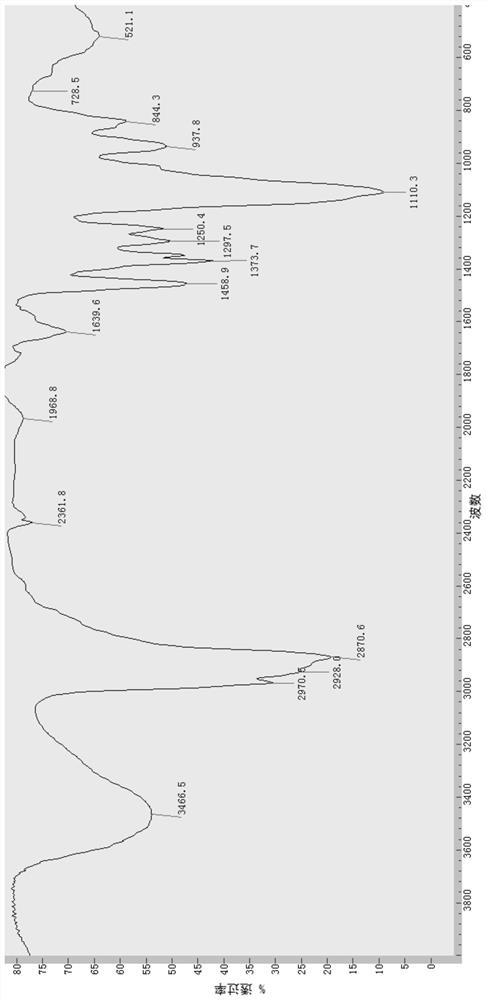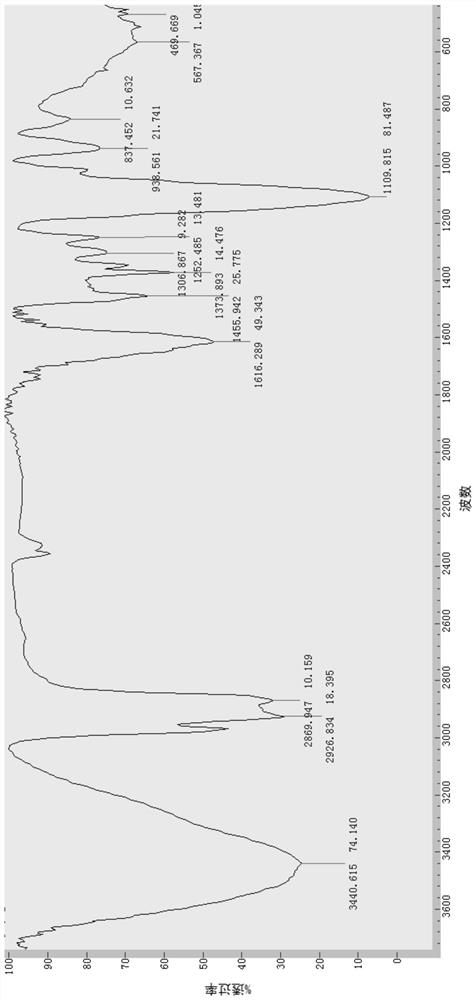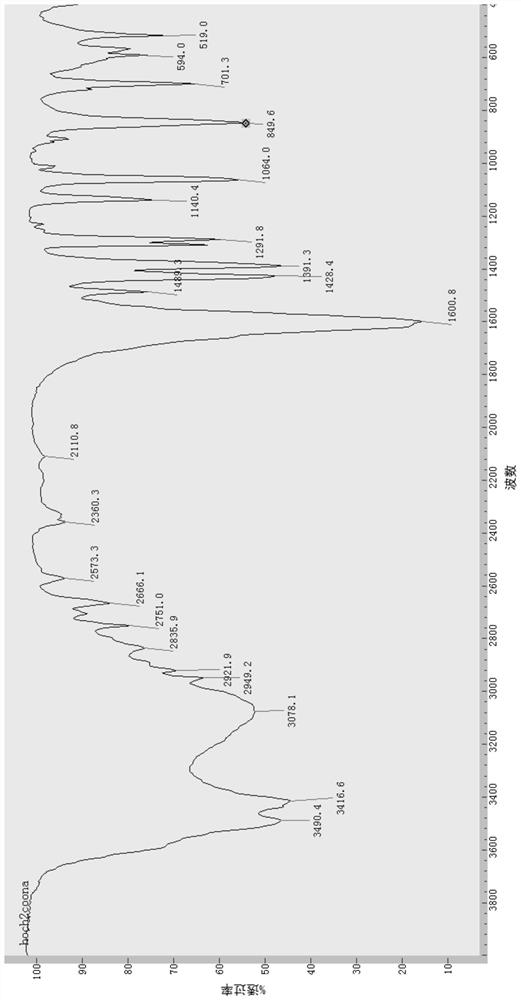Temperature-resistant salt-resistant low-tension foam oil-displacing agent as well as preparation method and application thereof
A foam flooding, temperature-resistant and salt-resistant technology, which is applied in the preparation of carboxylate, chemical instruments and methods, preparation of organic compounds, etc. Improve foaming ability and highlight the effect of foam performance
- Summary
- Abstract
- Description
- Claims
- Application Information
AI Technical Summary
Problems solved by technology
Method used
Image
Examples
Embodiment 1
[0063] 1) Alkalization reaction of lauryl alcohol polyoxyethylene ether (3):
[0064] Add 318g (1mol) lauryl alcohol polyoxyethylene ether (3) into the reaction kettle with heating, temperature control and electric stirring device, heat up to about 70°C, and use a screw feeder to feed 120g (3.0 mol) solid sodium hydroxide is slowly added to the reaction kettle, after the addition is completed, the temperature is raised to about 75°C, and the reaction is continued for about 2 hours at this temperature;
[0065] 2) carboxymethylation reaction:
[0066] The temperature of the reactant system in the reaction kettle after alkalization in step 1) is lowered to about 55° C., and 141.8 g (1.5 mol) of solid chloroacetic acid is slowly added to the reaction kettle with a screw feeder under constant stirring. After the feeding is completed, Heating to about 80°C, and continuing the constant temperature reaction for about 4 hours to obtain a heat-resistant, salt-resistant, low-tension fo...
Embodiment 2
[0071] 1) Alkalization reaction of tetradecyl alcohol polyoxyethylene ether (3):
[0072] Add 346g (1mol) tetradecyl alcohol polyoxyethylene ether (3) into the reaction kettle with heating, temperature control and electric stirring device, heat up to about 70°C, and use a screw feeder to feed 112g (2.8 mol) solid sodium hydroxide is slowly added to the reaction kettle, after the feeding is completed, the temperature is raised to about 75°C, and the reaction is continued at this temperature for 1 to 2 hours;
[0073] 2) carboxymethylation reaction:
[0074] The temperature of the reactant system in the reaction kettle after alkalization in step 1) is lowered to about 55°C, and 132.3g (1.4mol) of solid chloroacetic acid is slowly added to the reaction kettle with a screw feeder under constant stirring. After the feeding is completed, Heating to about 85°C, and continuing the constant temperature reaction for 2 to 5 hours to obtain a heat-resistant, salt-resistant, low-tension f...
Embodiment 3
[0077] 1) Alkalization reaction of tetradecyl alcohol polyoxyethylene ether (4):
[0078] Add 390g (1mol) tetradecyl alcohol polyoxyethylene ether into the reaction kettle with heating, temperature control and electric stirring device, (4) heat up to about 70°C, and use a screw feeder to feed 112g (2.8 mol) solid sodium hydroxide is slowly added to the reaction kettle, after the feeding is completed, the temperature is raised to about 75°C, and the reaction is continued at this temperature for 1 to 2 hours;
[0079] 2) carboxymethylation reaction:
[0080] The temperature of the reactant system in the reaction kettle after alkalization in step 1) is lowered to about 55°C, and 132.3g (1.4mol) of solid chloroacetic acid is slowly added to the reaction kettle with a screw feeder under constant stirring. After the feeding is completed, Heating to about 85°C, and continuing the constant temperature reaction for 3 to 4 hours to obtain a heat-resistant, salt-resistant, low-tension f...
PUM
 Login to View More
Login to View More Abstract
Description
Claims
Application Information
 Login to View More
Login to View More - R&D
- Intellectual Property
- Life Sciences
- Materials
- Tech Scout
- Unparalleled Data Quality
- Higher Quality Content
- 60% Fewer Hallucinations
Browse by: Latest US Patents, China's latest patents, Technical Efficacy Thesaurus, Application Domain, Technology Topic, Popular Technical Reports.
© 2025 PatSnap. All rights reserved.Legal|Privacy policy|Modern Slavery Act Transparency Statement|Sitemap|About US| Contact US: help@patsnap.com



